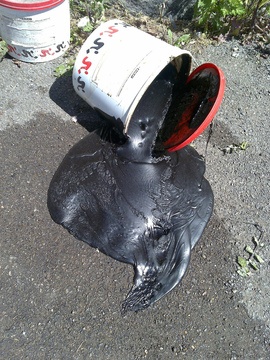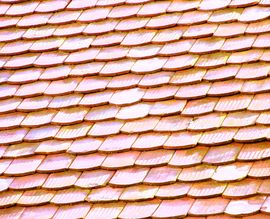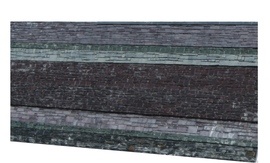How Much Does It Cost to Replace a Roof in California?
Roofing is one of the most important investments you will make in your home. A good roof helps protect your home from the elements while also raising its curb appeal. And if you live in California, your roof may have other requirements as well. With the Title 24 Building Energy Efficiency Standards, many parts of California will be required to use cool roofing materials beginning in 2022. Most of the popular roofing already used in California, including asphalt and architectural shingles, metal roofing, and tile roofing, are also available in cool roof options. With these different materials and the need for many parts of the state to have cool roofs, there is a wide range of costs associated with roof replacement in the state.
In addition, inflation, supply chain issues, and an increase in demand have led many roofing manufacturers to plan on increasing their costs beginning in January 2023. Depending on the company, these may range from 3.5% to 15% and follow increases of roughly 10% already seen in the last year. The state average cost to replace a roof is $12,000 to $20,000, with most homeowners paying around $15,000 to replace existing shingles with white solar-reflective architectural shingles on a 2,000 sq.ft. roof. This project’s low cost is $10,000 for replacing an existing 2,000 sq.ft. asphalt roof with a standard architectural shingle roof. The high cost is $50,000 to replace an existing tile roof with a cool reflective tile roof, making modifications to the roofing deck.
Cost to Replace a Roof in California
| Cost of a New Roof in California | |
|---|---|
| National average cost | $15,000 |
| Average range | $12,000-$20,000 |
| Low-end | $10,000 |
| High-end | $50,000 |
In this guide
Roof Replacement Cost in California by Pitch
Average Cost of a New Roof in California by Material
Cost of Roof Replacement in California by Shape
Roof Replacement Cost Breakdown (California)
Removing Old Roofing vs Roofing Over in California
Enhancement and Improvement Costs
Additional Considerations
FAQs
Roof Replacement in California Cost by Project Range
Cost of a New Roof in California by Size
Like most areas, one of the biggest contributing factors to the cost of a roof replacement is its size. Most are sold and installed by the square, which is equal to 100 sq.ft. The average cost range per square in California is $550 to $2,450 a square, depending on the material. Asphalt 1 and architectural shingles 2 cost the least, while tile and slate 3 roofs cost the most. Metal roofs tend to fall in the middle, although new laws surrounding cool roofs are raising the costs of some materials and making others less desirable.
These costs are higher than the national average of $475 to $1,000 a square. This is because of the popularity of materials like slate, tile, and metal roofing, the higher labor costs in California than the national average, and the requirements for cool roofing materials raising costs slightly. Below are the average costs to replace a roof of varying sizes in California and the national average costs for the same sizes.

| Size | Replacement Cost (California) | Replacement Cost (National Average) |
|---|---|---|
| 1,000 sq.ft. | $5,500 - $24,500 | $4,750 - $10,000 |
| 1,200 sq.ft. | $6,600 - $29,400 | $5,700 - $12,000 |
| 1,350 sq.ft. | $7,425 - $33,075 | $6,413 - $13,500 |
| 1,500 sq.ft. | $8,250 - $36,750 | $7,125 - $15,000 |
| 2,000 sq.ft. | $11,000 - $49,000 | $9,500 - $20,000 |
| 2,500 sq.ft. | $13,750 - $61,250 | $11,875 - $25,000 |
| 3,000 sq.ft. | $16,500 - $73,500 | $14,250 - $30,000 |
| 4,000 sq.ft. | $22,000 - $98,000 | $19,000 - $40,000 |
Roof Replacement Cost in California by Pitch
While material and size are two of the biggest factors impacting the cost of your replacement, the pitch or slope can also have an impact. Pitch refers to how fast your roof rises for every 12”. A flat roof is between 0/12 and 2/12, while a low slope roof is between 2/12 and 4/12. Conventional slopes range from 4/12 to 7/12, while a steep roof is anything over 8/12.
In general, flat and low slope roofs use a different material, so they have different costs. A steep pitched 4 roof often costs more because of the additional labor involved. Many residential homes in California have conventionally pitched roofs, while some modern homes may have flat or low pitched roofs. Very high pitched roofs are uncommon in Southern California but may be found in some Northern areas. Below are the average costs per square foot to replace roofs of different pitches in California, compared to the national average.

| Pitch | Cost per Sq.Ft. (California) | Cost per Sq.Ft. (National Average) |
|---|---|---|
| Flat | $3.50 - $4.50 | $4 - $10 |
| Low Slope | $3.50 - $4.50 | $4 - $10 |
| Conventional Slope | $5.50 - $24.50 | $4.75 - $10 |
| Steep Slope | $10.50 - $40 | $8.85 - $15.25 |
Average Cost of a New Roof in California by Material
While you can use any roofing material in California, not all materials will meet the new regulations regarding cool roofs. Most homes in California use one of five materials - asphalt/architectural shingles, metal, concrete, clay, or slate. Each of these comes in a wide range of styles, and most have options for cool roofing, helping them meet the new regulations.
Asphalt and architectural shingles are used on the majority of homes in California, most particularly on those used inland. Wooden roofs are much less common but not much more expensive, so the average cost to replace a wood shingle roof in California is just slightly higher than a shingle roof. Metal roofs have been rapidly gaining in popularity, especially new materials like stone-covered metal and reflective metal roofs, because they help meet the cool roof standards and are very durable, although costs have increased recently with new cool roofing laws. Tile roofs made of clay and concrete are also popular, particularly in Southern California and along the coast. They are often used with the Spanish-style architecture found in these areas. Slate is the least often used of the various materials and is most often found on older homes because it is so long-lasting. Below are the average roof replacement costs for each of these materials in California and the national average costs.

| Material | Cost per Sq.Ft. (California) | Cost per Sq.Ft. (National Average) |
|---|---|---|
| Asphalt Shingles | $5.50 - $11.50 | $3 - $15 |
| Wooden Shakes | $6 - $13 | $6 - $18 |
| Concrete | $8.50 - $20 | $4 - $20 |
| Clay | $10 - $20 | $10 - $25 |
| Metal | $10 - $24.50 | $4.50 - $40 |
| Slate | $10 - $24.50 | $7 - $30 |
Cost of Roof Replacement in California by Shape
The shape of your roof can impact how much it costs to reroof. Most fall into the same cost range, but some very complex designs can change the cost, such as roofs with dormer windows inset and mansard roofs, which change pitch steeply. Many roofs in California are gable, hipped, and Dutch roofs. Some modern homes have flat or butterfly-style roofs, while older homes may have dormer and mansard styles. A-frame is less common throughout the state but can be found in the north, closer to Oregon.
Some like the hipped and Dutch roofs require more material than other types. This means that two homes that are the same size but with different styles could have radically different costs for a replacement. Below are the average costs of roof replacement in California and the national average costs for the same shape.

| Shape | Cost per Sq.Ft. (California) | Cost per Sq.Ft. (National Average) |
|---|---|---|
| Flat | $3.50 - $4.50 | $4 - $10 |
| Gable | $5.50 - $24.50 | $4.75 - $10 |
| Hipped | $5.50 - $24.50 | $4.75 - $10 |
| Dutch | $5.50 - $24.50 | $4.75 - $10 |
| Butterfly | $5.50 - $24.50 | $4.75 - $10 |
| Dormer | $6 - $25 | $5.75 - $11.70 |
| A-Frame | $7 - $30 | $8.85 - $15.25 |
| Mansard | $9 - $30 | $11 - $21 |
Roof Replacement Cost Breakdown (California)
The labor costs to replace a roof in California varies depending on the material and installation complexity. The average labor cost ranges from $3 to $13 a sq.ft., depending on the material. Of those costs, $1 to $2 a sq.ft. is for the tear-off of the old roof, with the remaining costs going toward the installation of the new roof and the other necessary materials. Complex roofs and patterns can have higher labor costs, as can roofs being clad with clay or slate. The following breakdown shows the average cost of roof replacement, including tear-off, installation, and materials.

| Project Area | Average Costs per Sq.Ft. |
|---|---|
| Tear-Off (Optional) | $1 - $2 |
| Material | $2.50 - $11.50 |
| Installation | $2 - $11 |
Removing Old Roofing vs Roofing Over in California
Depending on the roof type and what you plan on replacing it with, you may not need to remove your existing roof before installing a new one. This is known as a roof over, and in California, it is legal to have two layers of roofing if that roofing is asphalt, composition shingle, wood shingle or shake, or older mineral aggregate built-up roofs. If you already have two layers of material on your roof, both must be removed before you can install the new shingles.
To roof over in California, your roof needs to meet several criteria, including the material type, its condition, the roof slope, and how the roof over is done. Because of this and roofed-over roofs do not last as long as new roofs, it is fairly uncommon to reroof in California. While it is possible and will cost less to install one layer of material over another, it usually costs more in the long term. It costs more to remove two layers of material than one, and roofed-over roofs tend to deteriorate more quickly, so you will need to replace them sooner. This can lead to a higher overall cost for the lifetime of the roof. Replacing the roof is more expensive upfront but can eliminate issues over time, which can make it more affordable long term. Replacing the roof enables the roofer to see the roof deck, allowing them to make repairs if necessary. In a roof over, any issues with the deck may go unseen.
Enhancement and Improvement Costs
Skylight Replacement
If you have a skylight in your home that needs replacing, the best time to do that may be during a roof replacement. To replace the skylight, the roofing material around it must be removed and then replaced after installing the skylight. Replacing the skylight when the roof is removed is faster and may be less costly. The average cost to replace a skylight is $800 to $2,200.
Cost to Redeck a Roof
California building codes dictate that your new roof must be adhered to a stable plywood or comparable roof sheathing for the deck. If your roof deck is older or in poor condition, it may need to be replaced. Depending on the material and roof shape and size, this can have a wide range, costing $1,500 to $5,000.
Additional Considerations and Costs
- Permits. Permits are required for all roofing work in California. Failure to obtain a permit may result in fines. The cost of a permit ranges from $100 to $600.
- Licensing and insurance. All contractors in California must be licensed and insured. Always request to see your contractor’s license and proof of insurance before starting a contract.
- Dump fees. Some roofing shingles may be recycled in California, while others may need to be disposed of. Depending on the material and how it is being disposed of, expect to pay additional fees of up to $300 for very heavy or difficult-to-dispose materials. Other materials may have no additional fees.
- Grants. If you need help paying for your new roof, you may be eligible for grants or loans that offset the cost. To find out if you qualify, visit your local municipality.
- Local codes. California has very strict building codes, including how roofs can be replaced, the deck, slope, and material. Depending on where in the state you live, your roofer may need to update your roof to meet local codes, which can increase costs.
- Rainwater elements. It is very common to replace rainwater elements at the same time as the roof. These may include drip edges, fascia, gutters, eaves, and other roof-adjacent areas. Speak to your installer if you think these may need to be updated.
- Inspection. Roof inspections are crucial to ensuring your roof remains in good condition. An inspection can help find leaks and other issues before they cause problems that may lead to a full replacement. The average inspection costs $100 to $600.
- Asbestos. If you have an older roof, there is a chance it contains asbestos fibers. These were included in some roofs up to the 1980s. They must be removed properly to ensure that the fibers do not become airborne and pose a health hazard. Removing a roof containing asbestos costs $50 to $150 a sq.ft.
- Location. California is a large state that stretches most of the West Coast. Some areas near the coast and where cool roofs are required may have varying or higher costs than other areas.
FAQs
- How much does it cost to replace a roof in the Bay Area?
Average costs in the Bay Area are close to the state average range of $12,000 to $20,000 for a 2,000 sq.ft. roof. Your exact costs vary depending on the roof size and material.
- How long do roofs last in California?
This depends on several factors, including the type and where in California you are located. Tile roofs can last 100 years when properly maintained, while slate roofs can last 200 years. Asphalt and architectural roofs can last anywhere from 10 to 50 years, depending on the climate and quality.
- Do you need a permit to replace a roof in California?
Yes, any roofing work done in California requires a permit. Failure to obtain a permit may result in fines. Speak to your contractor or local municipality for more information.
- How long is a roof warranty in California?
This depends on the roofing material and the company installing it. Some materials, such as architectural shingles, can have warranties of up to 50 years if properly installed.
- What type of roof is best for California?
This depends on where in the state you live. If you live in a zone specified for cool roofing, materials like metal or asphalt and architectural shingles may be the right choice. However, you may be able to use other materials that better suit your home’s needs in the northern and inland parts of the state.
- How many layers of roofing are allowed in California?
This depends on the material and the roof. However, asphalt and composition shingles and wood shingles and shakes may have up to two layers in some cases. All other roofing materials should have only one layer.
Remodeling Terms Cheat Sheet
Definitions in laymen's terms, cost considerations, pictures and things you need to know.See full cheat sheet.
 1 Asphalt: A viscous, black mixture of hydrocarbons often used for roofing and waterproofing. It is also used in asphalt for paving roads
1 Asphalt: A viscous, black mixture of hydrocarbons often used for roofing and waterproofing. It is also used in asphalt for paving roads
 2 Shingles: A smooth, uniform, flat piece of construction material, available in a wide variety of materials and laid in a series of overlapping rows, used to cover the outside of roofs or walls to protect against weather damage and leaks.
2 Shingles: A smooth, uniform, flat piece of construction material, available in a wide variety of materials and laid in a series of overlapping rows, used to cover the outside of roofs or walls to protect against weather damage and leaks.
 3 Slate: A fine-grained rock, typically bluish-gray in color, that can easily be split into thin layers and is commonly used as a roofing material
3 Slate: A fine-grained rock, typically bluish-gray in color, that can easily be split into thin layers and is commonly used as a roofing material
How much does it cost to replace a roof in California in my city?
Cost to replace a roof in California varies greatly by region (and even by zip code). To get free estimates from local contractors, please indicate yours.






